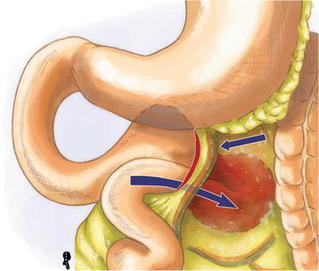Patients are usually aware of a lump on the abdominal wall under the skin. Self-diagnosis is common. The hernia is usu- ally painless but patients may complain of an aching or heavy feeling. Sharp, intermittent pains suggest pinching of tissue. Severe pain should alert the surgeon to a high risk of stran- gulation. One should determine whether the hernia reduces spontaneously or needs to be helped. The patient should be asked about symptoms that might suggest bowel obstruction. It is important to know if this is a primary hernia or whether it is a recurrence after previous surgery. Recurrent hernia is more difficult to treat and may require a different surgical approach. General questions about the cardiac and respiratory sys- tems are necessary to assess a patient’s anaesthetic risk. In a man with a groin hernia, history of prostatic symp- toms indicates a high risk of postoperative urinary retention. Intake of anticoagulants such as warfarin is important because this impacts on future surgery. Many hernia opera- tions can be performed as a day case or single overnight stay, so that suitability for such treatment needs to be assessed, including home support, distance from the hospital, mobility levels, etc
